In 220 AD, the Later Eastern Han Dynasty extended sections of the Great Wall of China along the Mongolian border. This made it harder for the Huns to attack into China, so they turned westward, attacking and displacing tribes throughout Central Asia.

Saint Patrick – His Amazing Life from Tragedy to Triumph (Book)

These tribes migrated further west, overrunning the western borders of the Roman Empire:
- Visigoths,
- Ostrogoths,
- Franks,
- Anglos,
- Saxons,
- Alemanni,
- Thuringians,
- Rugians,
- Jutes,
- Picts,
- Burgundians,
- Lombards,
- Alans, and
- Vandals.

Rome had to withdraw its Legions from other areas of the Empire, such as Britain, in order to place them along the Roman border.This left Britain, which had been a Roman territory since the time of Julius Caesar, unprotected.

Marauding bands and lawless mobs raided Britain’s unprotected Roman settlements and carried away thousands to sell into slavery in Ireland.

Ireland was ruled by the bloodthirsty, superstitious pagan Druids. Thomas Cahill wrote in How the Irish Saved Civilization (Random House, 1995):“Romans, in their first encounters with these exposed, insane warriors, were shocked and frightened … They were howling and, it seemed, possessed by demons, so outrageous was their strength … featuring all the terrors of hell itself. “The Druids, from whom Halloween originated, believed that the trees and hills were inhabited by good and evil spirits which constantly needed to be appeased.

Cahill continued:“(Druids) sacrificed prisoners of war to the war gods and newborns to the harvest gods. Believing that the human head was the seat of the soul, they displayed proudly the heads of their enemies in their temples and on their palisades; they even hung them from their belts as ornaments, used them as footballs in victory celebrations, and were fond of employing skull tops as ceremonial drinking bowls. They also sculpted heads – both shrunken, decapitated heads.”

Patrick’s British name at birth was Sucat, but his Latin name was “Patricius,” meaning “Nobleman.” Around 405 A.D., at the age of 16 years old, while working on his father’s farm near the sea, 50 currachs (longboats) filled with raiders weaved their way toward the shore.

Mary Cagney, author of the article “Patrick The Saint” (Christian History, Issue 60), wrote: “With no Roman army to protect them (Roman legions had long since deserted Britain to protect Rome from barbarian invasions), Patricius and his town were unprepared for attack. The Irish warriors, wearing helmets and armed with spears, descended on the pebble beach. The braying war horns struck terror into Patricius’ heart, and he started to run toward town. The warriors quickly demolished the village, and as Patricius darted among the burning houses and screaming women, he was caught. The barbarians dragged him aboard a boat bound for the east coast of Ireland.”
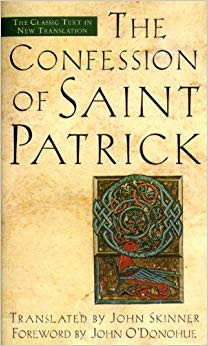
For six years Patrick herded animals for a Druid chieftain. He later wrote in his life’s story, called The Confession of Saint Patrick: “But after I came to Ireland — every day I had to tend sheep, and many times a day I prayed — the love of God and His fear came to me more and more, and my faith was strengthened.

And my spirit was moved so that in a single day I would say as many as a hundred prayers, and almost as many in the night, and this even when I was staying in the woods and on the mountains; and I used to get up for prayer before daylight, through snow, through frost, through rain …
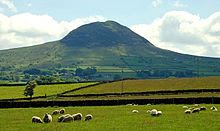
… There the Lord opened the sense of my unbelief that I might at last remember my sins and be converted with all my heart to the Lord my God who … comforted me as would a father his son.”
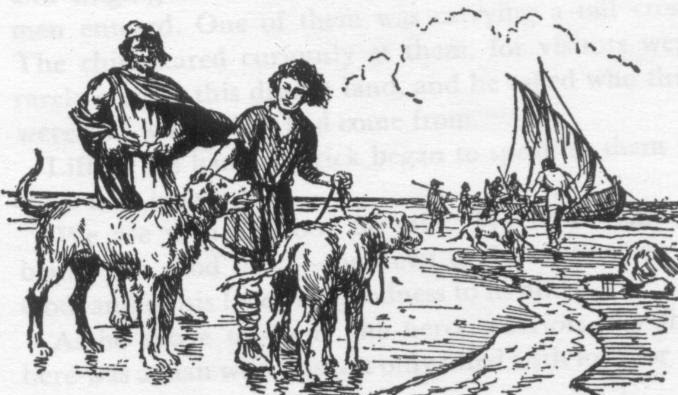
Then Patrick had a dream, as he wrote: “One night I heard in my sleep a voice saying to me: ‘It is well that you fast, soon you will go to your own country.’ And again … a voice saying to me: `See, your ship is ready.’ And it was not near, but at a distance of perhaps two hundred miles … Then I took to flight … I went in the strength of God who directed my way … until I came to that ship.”

Saint Patrick – His Amazing Life from Tragedy to Triumph (Book and DVD)
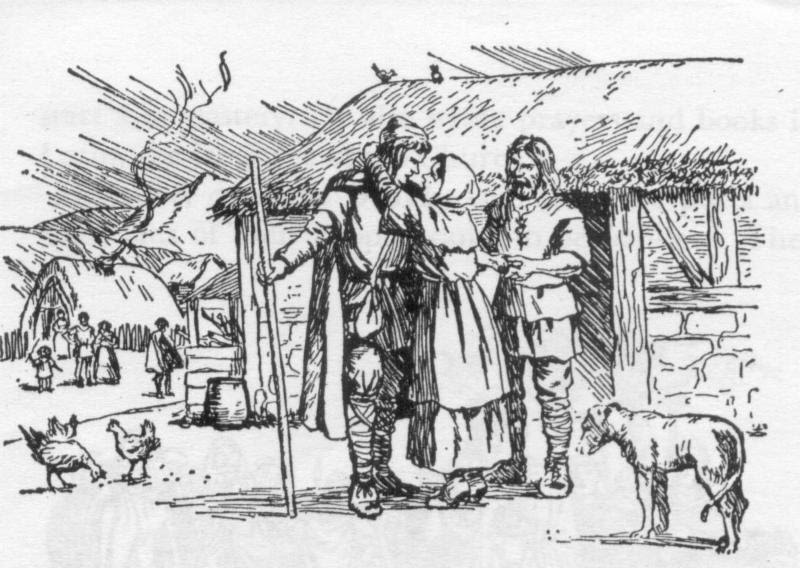
Patrick eventually made his way back to Britain and was reunited with what was left of his family. Then, when he was about 40 years old, he had another dream calling him back to Ireland as a missionary.

In his Confession, Patrick wrote: “In the depth of the night, I saw a man named Victoricus coming as if from Ireland, with innumerable letters, and he gave me one and while I was reading I thought I heard the voice of those near the western sea call out: ‘Please, holy boy, come and walk among us again. ‘Their cry pierced my very heart, and I could read no more, and so I awoke.”

Patrick returned to Ireland.
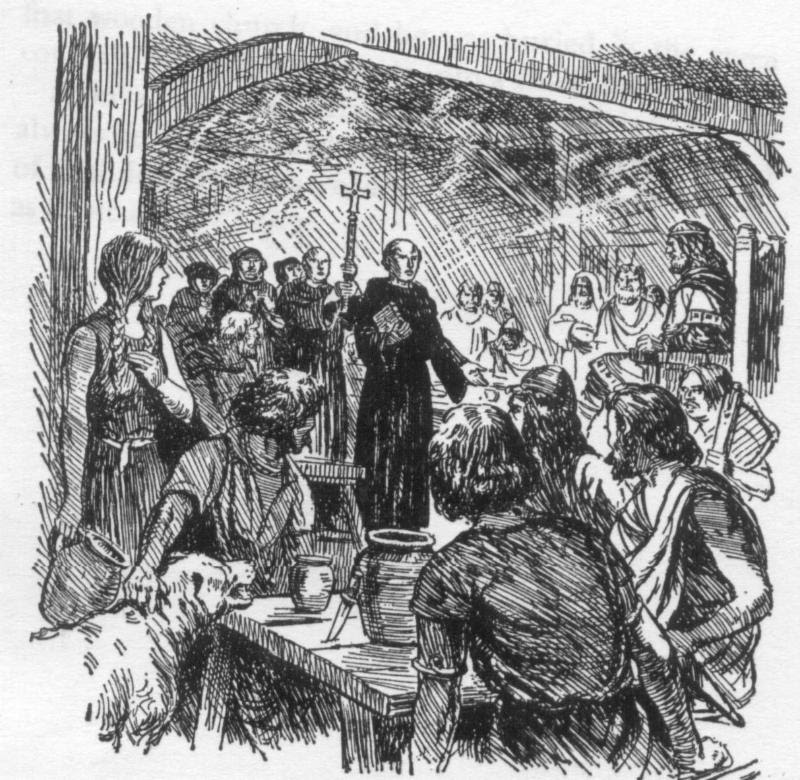
He confronted the Druids, converted chieftains, and used the three-leaf clover to teach the Trinity.
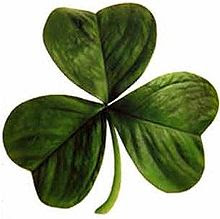
The Druids tried to ambush and kill Patrick nearly a dozen times: “Daily I expect murder, fraud or captivity, but I fear none of these things because of the promises of Heaven …The merciful God often freed me from slavery and from twelve dangers in which my life was at stake-not to mention numerous plots …
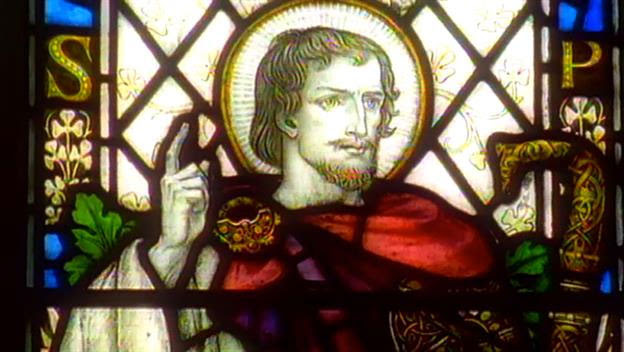
… God is my witness, who knows all things even before they come to pass, as He used to forewarn even me … of many things by a divine message …

… I came to the people of Ireland to preach the Gospel, and to suffer insult from the unbelievers …I am prepared to give even my life without hesitation and most gladly for His name, and it is there that I wish to spend it until I die.”

Encyclopedia Britannica stated that Patrick challenged: “royal authority by lighting the Paschal fire on the hill Slane on the night of Easter Eve. It chanced to be the occasion of a pagan festival at Tara, during which no fire might be kindled until the royal fire had been lit.”

As Patrick’s fire on the Hill of Slane illuminated the countryside, King Loigaire (King Leary) is said to have exclaimed: “If we do not extinguish this flame it will sweep over all Ireland.”

Mary Cagney, in “Patrick the Saint”(Christianity Today, Issue 60), wrote: “Predictably, Patrick faced the most opposition from the Druids, who practiced magic … and advised Irish kings. Biographies of the saint are replete with stories of Druids who ‘wished to kill holy Patrick’ …One biographer from the late 600’s, Muirchu’, described Patrick challenging Druids to contests at Tara …
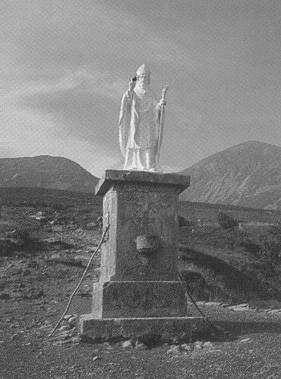
… The custom was that whoever lit a fire before the king on that night of the year (Easter’s eve) would be put to death. Patrick lit the paschal fire before the king on the Hill of Slane. The people saw Patrick’s fire throughout the plain, and the king ordered 27 chariots to go and seize Patrick … Seeing that the impious heathen were about to attack him, Patrick rose and said clearly and loudly, ‘May God come up to scatter his enemies and may those who hate him flee from his face. ‘By this disaster, caused by Patrick’s curse in the king’s presence because of the king’s order, seven times seven men fell …And the king driven by fear, came and bent his knees before the holy man.'”
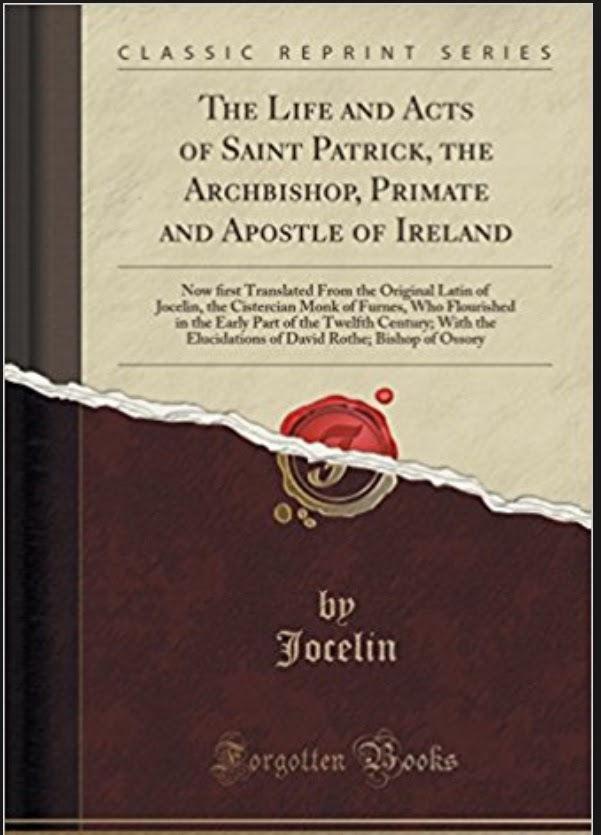
Many miraculous acts were attributed to Patrick. The Life and Acts of Saint Patrick was compiled by a 12th century Cistercian Monk of Furnes named Jocelin. A popular translation was done by Edmund L. Swift, Esq., Dublin, in 1809, with elucidations of David Rothe, Bishop of Ossory. The Life and Acts of Saint Patrick contains chapters such as:
- Chapter 68: Of his Journey, & of his manifold Miracles;
- Chapter 69: The Sick Man cured;
- Chapter 71 The Dead are raised up; the King & the People are converted;
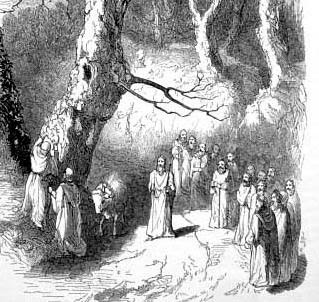
- Chapter 78: Nineteen Men are raised by Saint Patrick from the Dead;
- Chapter 80: The King Echu is raised from Death;
- Chapter 81: A Man of Gigantic Stature is revived from Death;
- Chapter 82: Of Another Man who was Buried & Raised Again;

- Chapter 83: Of the Boy who was torn in pieces by Swine & restored unto Life;
- Chapter 145: Of a Woman who was raised from Death;
- Chapter 146: The Testimony of One who was revived from Death;
- Chapter 172: He banisheth the Demons forth of the Island;
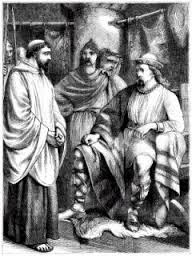
- Chapter 178: The Soul of a Certain Sinner is by Saint Patrick freed from Demons;
- Chapter 186: Of the Sick whom he healed, & the Dead whom he raised; & of his Disciples who recorded his Acts.
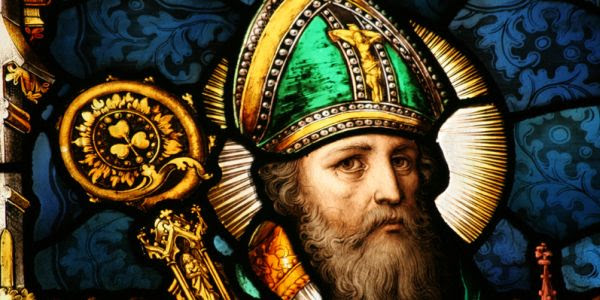
In his thirty years of ministry, Saint Patrick is credited with baptizing 120,000 people and founding 300 churches.
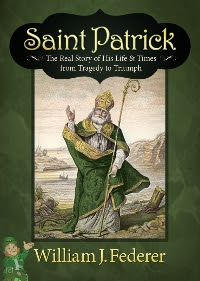
Despite his great achievements, Patrick struggled with an inferiority complex. In his Confession, Patrick wrote: “I had long had it in mind to write, but up to now I have hesitated. I was afraid lest I should fall under the judgment of men’s tongues because I am not as well read as others … As a youth, nay, almost as a boy not able to speak, I was taken captive … Hence to-day I blush and fear exceedingly to reveal my lack of education; for I am unable to tell my story to those versed in the art of concise writing — in such a way, I mean, as my spirit and mind long to do, and so that the sense of my words expresses what I feel. “In his letter to Coroticus, he wrote: “I, Patrick, a sinner, very badly educated.”
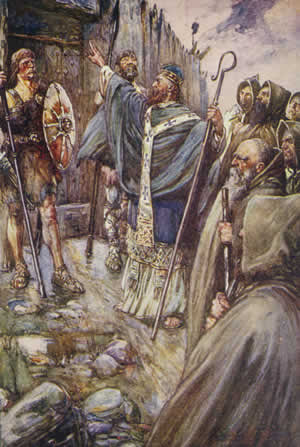
Coroticus was a tyrant king in Britain who carried off some of Patrick’s converts into slavery. “Ravenous wolves have gulped down the Lord’s own flock which was flourishing in Ireland, and the whole church cries out and laments for its sons and daughters.”

Patrick was one of the first major religious leaders to speak out strongly against slavery, having himself been a victim.
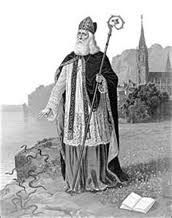
He considered one of the first “abolitionists,” as condemned the deeds of Coroticus, calling them “wicked, so horrible, so unutterable,” and exhorted him to “repent and free the converts.”

When the Irish converted to Christianity, they abandoned their pagan Druid laws, which Patrick replaced with Bible-based Latin-Irish laws. Leslie Hardinge wrote in The Celtic Church in Britain (Random House, 1995):”Wherever Patrick went and established a church, he left an old Celtic law book, Liber ex Lege Moisi (Book of the Law of Moses) along with the books of the Gospel. “This became called the “Senchus Mor” or “Code of Patrick.”
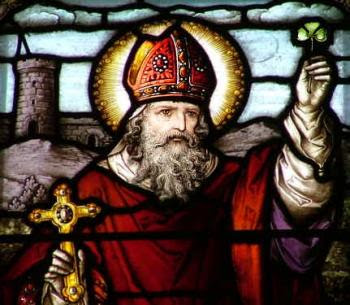
On MARCH 17, around 461 AD, Saint Patrick died.

The Liber Hymnorum, a collection of hymns from ancient manuscripts in Dublin, gives the account: “Saint Patrick sang this when an ambush was laid against his coming by King Loegaire, that he might not go to Tara to sow the faith. And then it appeared before those lying in ambush that they (Saint Patrick and his monks) were wild deer with a fawn following them. “The song is called the Lorica, which means Shield or Breastplate, also referred to as The Deer’s Cry.
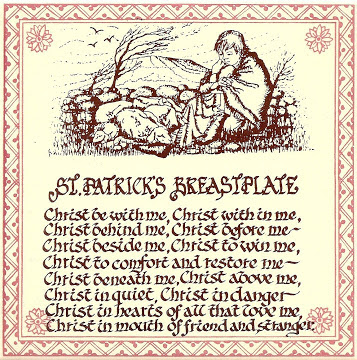
The Breastplate of Saint Patrick (translation by Cecil Frances Alexander): “I bind unto myself today The strong name of the Trinity, By invocation of the same, The Three in One, the One in Three. I bind this day to me for ever By power of faith, Christ’s incarnation; His baptism in the Jordan river; His death on the cross for my salvation. His bursting from the spiced tomb; His riding up the heavenly way; His coming at the day of doom; I bind unto myself today.
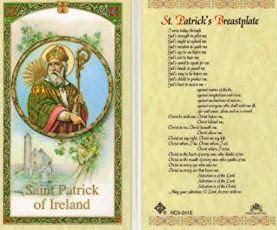
I bind unto myself today The power of God to hold and lead, His eye to watch, his might to stay, His ear to harken to my need; The wisdom of my God to teach, His hand to guide, his shield to ward, The Word of God to give me speech, His heavenly host to be my guard. Against all Satan’s spells and wiles, Against false words of heresy, Against the knowledge that defiles, Against the heart’s idolatry, Against the wizard’s evil craft, Against the death-wound and the burning, The choking wave, the poison’d shaft, Protect me, Christ, till thy returning.

Christ be with me, Christ within me, Christ behind me, Christ before me, Christ beside me, Christ to win me; Christ to comfort and restore me; Christ beneath me, Christ above me, Christ in quiet, Christ in danger, Christ in hearts of all that love me, Christ in mouth of friend and stranger. I bind unto myself the name, The strong name of the Trinity, By invocation of the same, The Three in One, and One in Three, Of whom all nature hath creation, Eternal Father, Spirit, Word; Praise to the God of my salvation; Salvation is of Christ the Lord!”

American Minute-Notable Events of American Significance Remembered on the Date They Occurred
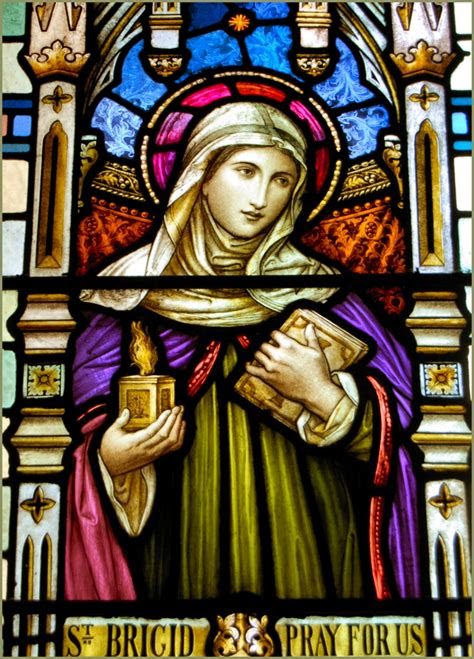
Following Saint Patrick’s example were many courageous Irish missionaries. St. Brigid of Kildare (451-525) founded numerous monasteries across Ireland.

Irish missionaries, such as Columba (521-597) and Columbanus (543-615), sailed back to Britain and Europe, where they evangelized the heathen hordes which had overrun the Roman Empire.
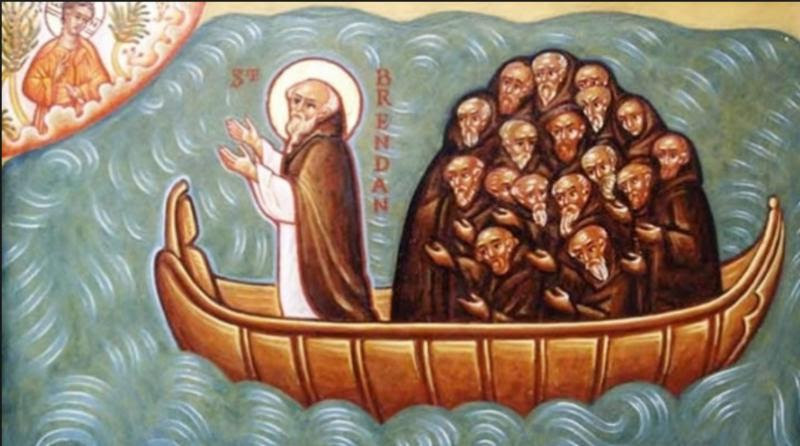
Irish missionary, St. Brendan (484-577), sailed west and is thought to have discovered North America.
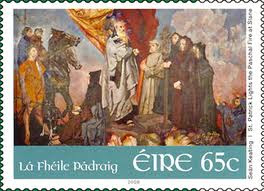
The Code of Patrick was taken by missionaries to Britain where it laid the foundation for English Common Law, later codified by Alfred the Great (847-899).As American law is based on English Common Law, one is struck with the thought that Saint Patrick may have even influenced the legal system in the United States.

Patrick’s influence was profound that over 1500 years later, there is still a date on the calendar to remember him. The World Book Encyclopedia (Chicago, IL: Field Enterprises, Inc., 1957, p. 6142) stated of Saint Patrick: “He found Ireland all heathen and left it all Christian.”
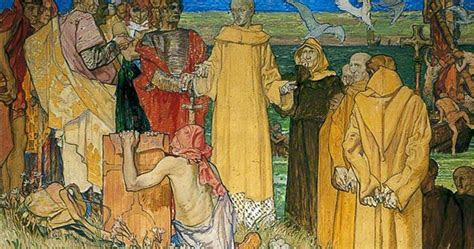
In 597, St. Augustine of Canterbury arrived in England and baptized King Ethelberht and thousands of his subjects. Bishops of the Celtic Christian tradition did not submit till the Synod of Whitby Abbey in 664, where King Oswy of Northumbria agreed to come under the authority of the Catholic Church.

At this time, Patrick was bestowed the title of Saint.

When the Reformation came to England with Henry VIII, Ireland remained Catholic. It was not until after the Battle of Kinsale, 1601, that the British began transplanting 200,000 Presbyterian Lowland Scots into Northern Ireland, creating a Scots-Irish population.
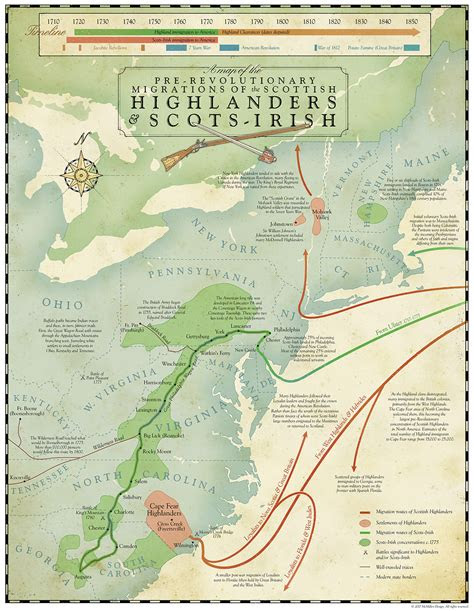
When England’s King Charles I tried to force these Presbyterians to comply with the Church of England in the 1630s, many fled to the colonies in America.
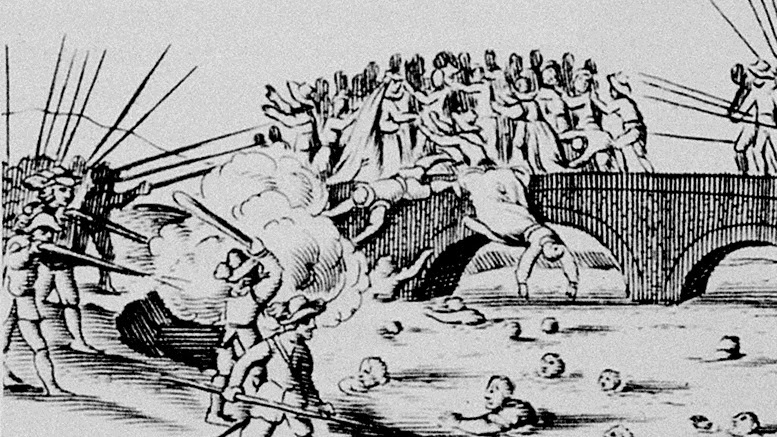
In 1641, an Irish Rebellion began the Irish Confederate War, after which thousands more fled to America.
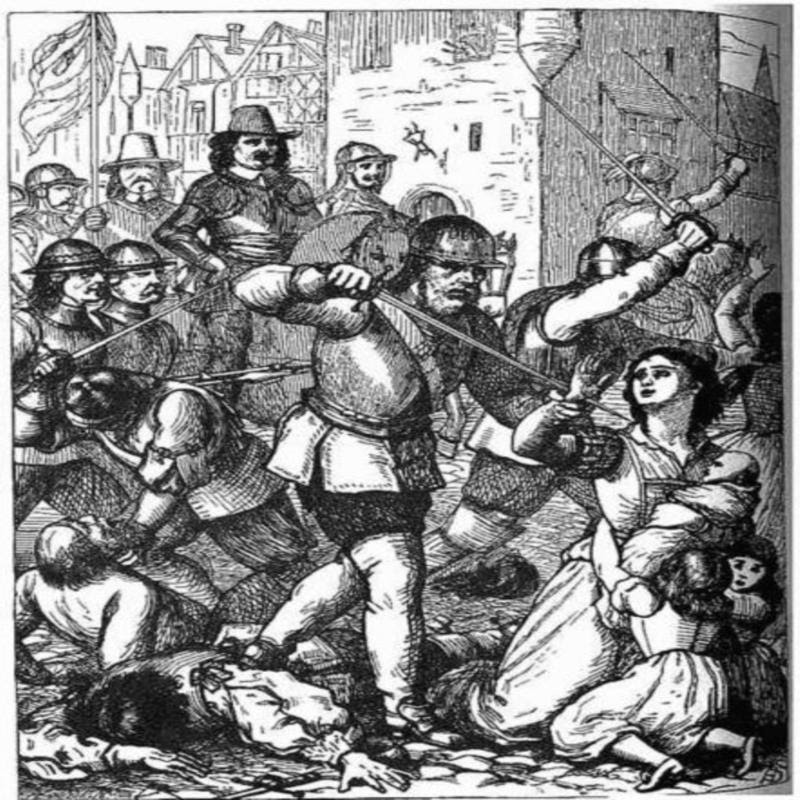
Oliver Cromwell invaded in the 1650s, causing more Irish Catholics to flee, with some 300,000 being sold into slavery in the English colonies of Virginia and New England, and in the Caribbean plantations of Antigua, Montserrat, Jamaica, and Barbados. Historian Will Durant wrote in The Story of Civilization: “The Irish scene was one of the most shameful in history.”
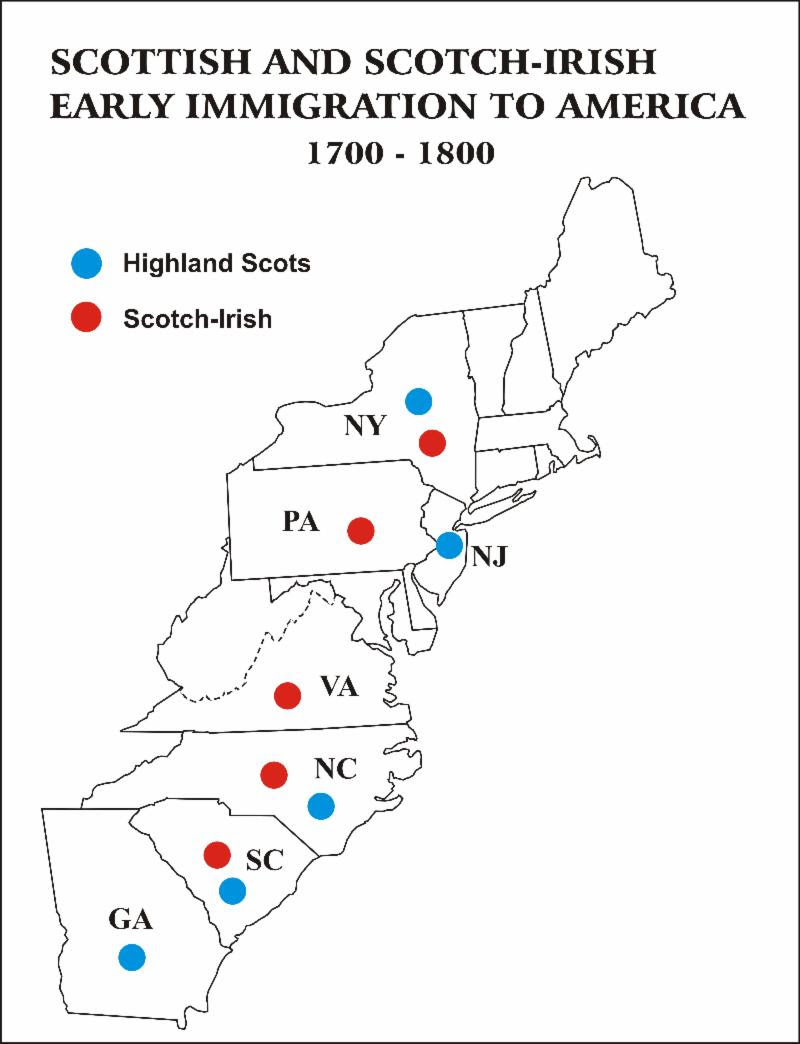
A Scottish famine in the 1690s brought thousands more Scots to Ireland, followed by another wave of Scots-Irish sailing to America.

In 1703, Queen Anne’s Test Act required all office-holders to subscribe to Anglican doctrine, and stripped other faiths of the right to worship, preach, or preform marriages.
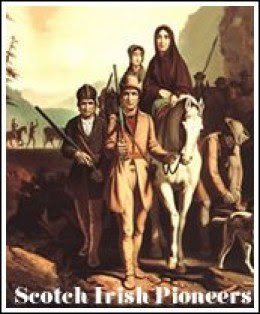
It is estimated that in the 1700s, a half million Irish and Scots-Irish came to America.

Another enormous wave of immigration occurred as a result of the Great Irish Potato Famine, 1845-1849.Millions of Irish died in Ireland and millions immigrated, causing the Catholic population in America to increase to 20 percent.

33 million Americans have Irish ancestry, composing about 11 percent of the U.S. population, second only to those with German ancestry, 15 percent. Twenty-two U.S. Presidents have some Irish ancestry.
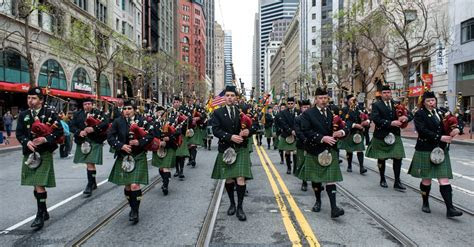
Communities across America have Saint Patrick’s Day Parades.

In his Confession, Saint Patrick wrote: “Patrick the sinner, an unlearned man to be sure. None should ever say that it was my ignorance that accomplished any small thing, it was the gift of God.”
